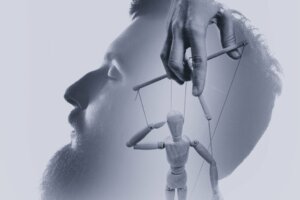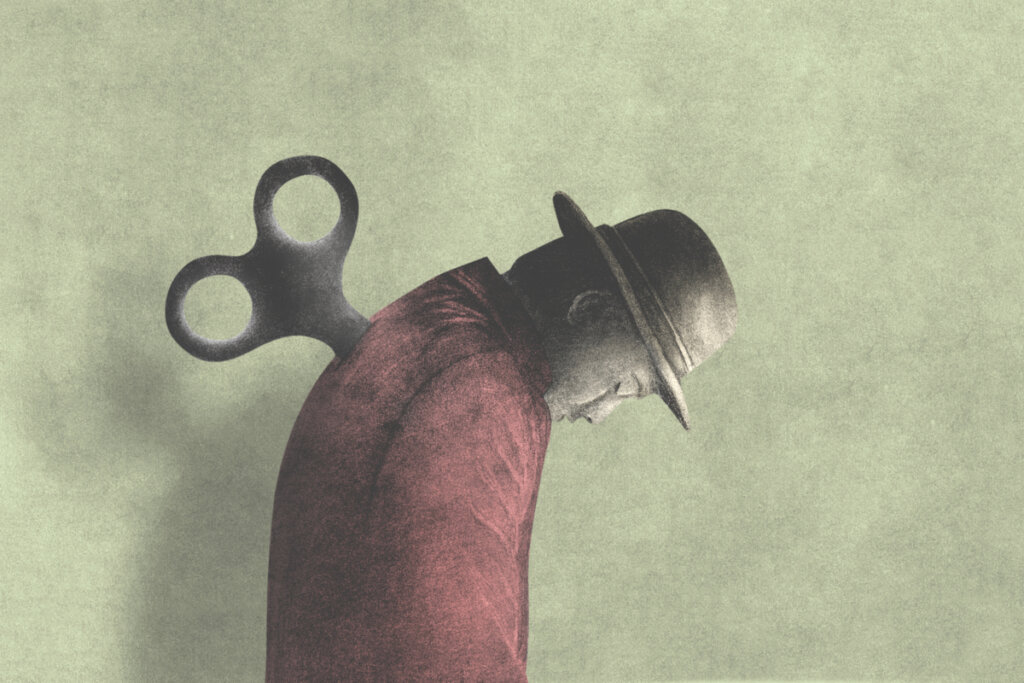Doublethink: Manipulation and Creativity

Doublethink was a concept introduced by George Orwell in his novel, 1984, one of the most visionary and original works of science fiction. Doublethink is a manipulation mechanism by which people come to think two contradictory things at the same time, without even realizing it.
Some ideologies can make people think in absurd terms. The same effect can be achieved in poetry, hence many artists have taken up the concept of doublethink. However, they don’t use it as a device to manipulate, but as a creative resource.
The concept of doublethink is a weapon that can be used to either generate control or inspire dreams. Indeed, it breaks with the limitations imposed by logic. It could also be said that it’s either a tool of totalitarianism or a liberating path. It all depends.
But Heraclitus will be eternally right with his assertion that being is an empty fiction. The “apparent” world is the only one: the “true world” is merely added by a lie.”
-Frederick Nietzsche-

Doublethink
In the novel, 1984, the link between language and power was masterfully exposed. In this book, doublethink was part of a form of social indoctrination. The goal of power was to get people to accept as true what was false, and vice versa.
In other words, it meant that people were to accept two contradictory ideas at the same time as if no contradiction existed. Often, a contradiction was produced between memory and a real event. Or between the obvious meaning of a specific fact and another completely opposite idea as dictated by the powers that be.
Although 1984 was a work of fiction, its content can be perfectly applied to reality today. For instance, one example of doublethink would be the common incidence of ‘cleansing’ certain biographies of figures who are considered ‘heroes’ by specific regimes. In these narratives, their exploits and successes are exalted, while, at the same time, their mistakes or crimes are minimized or omitted.
The essence of doublethink
The concept of doublethink appeared in George Orwell’s work via a pseudo-character named Emmanuel Goldstein. His work, The Theory and Practice of Oligarchical Collectivism, was read by the characters in Orwell’s book. Orwell defined the practice of doublethink as: “the power of holding two contradictory beliefs in one’s mind simultaneously, and accepting both of them”.
Orwell added other elements to this essential idea. he stated that the idea of doublethink was “to use conscious deception while retaining the firmness of purpose that goes with complete honesty”.
Orwell’s work claimed that to do this, lies must be told and ‘sincerely’ believed. Also, what isn’t convenient to remember should be forgotten and only brought back from memory when appropriate. In fact, he stated that doublethink meant “to deny the existence of objective reality and all the while to take account of the reality which one denies”.
As can be seen, these are actions linked with speech and, in some cases, memory. Therefore, the word, as such, is a field of power and the derived narratives can become forms of manipulation. Perhaps those who are followers of conspiracy theories should have a think about this. Because, behind these kinds of ideas, we usually find totalitarianism.

Creative doublethink
It’s also possible to hold appropriate contradictory ideas. In fact, not only is it possible, but in many cases, it helps to reveal a certain truth that isn’t so obvious or that’s of great importance. Cervantes’ Don Quixote takes shape around this kind of idea. In this book, the character’s doublethink revealed a desire to see beyond the world of the ordinary.
The paintings of Magritte or Escher fulfill a similar role. Even quantum physics has found that reality doesn’t work in a mechanical way and that paradox is sometimes perfectly possible. For example, the famous Schrödinger paradox, in which it’s plausible that a cat is both alive and dead at the same time under certain circumstances.
Art possesses a kind of magic, not to deceive but to be perceived and felt. However, power should always be discussed, as it has the potential for deception and manipulation. That’s the lesson of doublethink.
All cited sources were thoroughly reviewed by our team to ensure their quality, reliability, currency, and validity. The bibliography of this article was considered reliable and of academic or scientific accuracy.
- I Plaza, R. J. M. (2017). Doblepensar lo negroblanco: propuesta metodológica para el análisis de la postverdad. Tiempo devorado: revista de historia actual, 4(1), 116-145.
This text is provided for informational purposes only and does not replace consultation with a professional. If in doubt, consult your specialist.








